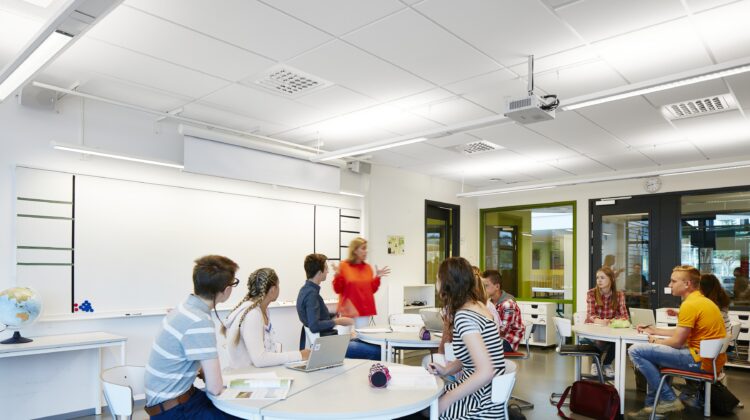
How does the view of school acoustics vary between five European countries?
Working across several countries, it’s interesting to reflect on the differences we see in terms of the role of acoustics. In some countries the sound environment barely gets a mention in a building process, in others only in certain types of specialist spaces and in a few, acoustic awareness is fairly high and part of the project from the start.
We took the opportunity to ask five of the experts at the ILETC Transitions seminar in London how school acoustics is considered in their home countries.
- Mariagrazia Marcarini, PhD researcher and trained teacher, Bergamo University, Italy Follow @MariMarcarini
- Karolina Szynalska, PhD candidate and trained architect, University of Cambridge, UK Follow @KSzynalska
- Silvia Sasot Ibanez, Architect and researcher, Ramon Llull University, Spain Follow @silsasot
- Mie Guldbaek Broens, trained teacher and Educational Anthropologist, LOOP.bz, the Netherlands Follow @LOOPbz
- Siv Stavem, School Planner and PhD researcher, Norconsult AS/ Oslo University, Norway Follow @123sista
-Find out more of what the experts have to say about innovative learning environments (ILEs) in this blog post.
Acoustics can be tricky in ILEs
When we asked these experts about the role of acoustics in so-called Innovative Learning Environments compared to traditional classrooms, three of the five believed it is more of an issue than cellular classrooms.
“Certainly. And not only because of the spatial complexity of the innovative learning environments but also due to different, often more interactive, pedagogical activities that take place inside them,” said Karolina Szynalska, a trained architect and researcher in the UK.
Educational anthropologist based in the Netherlands, Mie Guldbaek Broens, agreed;
“Yes, the demands are higher because of multiple speakers and activities taking place. It’s a new and more difficult situation to manage so those helping to provide acoustic solutions have to be open to experiment in order to succeed.”
Two of the researchers were quick to point out that many traditional classrooms have severe problems with acoustics. Even though it may seem more straightforward, this doesn’t mean that it’s automatically managed the way it ought to.
Lack of awareness – the common denominator
So what is being done in their respective countries in order to improve acoustics in educational buildings? Well, the researchers confirm our view; that it varies from country to country. Although, the common thread that they all share is a lack of awareness; in one way or another, spreading knowledge and talking about acoustics is key.
In Spain, it seems as though architects and building managers are unaware or simply not interested in focussing on acoustics. Silvia Sasot Ibanez, architect and researcher based in Barcelona, Spain says;
“The Spanish culture is noisy, so we place a noisy people inside buildings with high reverberation. We need more awareness about how the sound impacts our life; we are used to the noise.”
Mariagrazia Marcarini, ex-teacher and PhD researcher in Italy says it’s only now that schools are being developed with a clear focus on the sound environment. The developments are encouraging but slow to propagate throughout the country.
In northern Europe, Norway and Denmark, it seems as though the awareness is slightly higher and that several different partners are working to include acoustics in school projects; architects, teachers and municipalities.
Unfortunately, this hasn’t made it across the North Sea to the UK where Karolina says that “the body of research is growing, but it does not currently influence policy.” The UK has good acoustic design guidance but the mandatory criteria are not that high.
Do you agree?
This was the second and last part of the series where we spoke to European experts about learning environments and acoustics (find the first part about ILEs here). What’s your experience, do you agree with the researchers? Or if you’re based in another country, what initiatives are happening there which could be shared and which other countries can learn from?
Related articles:
How open should a learning space be – acoustically?
Transitions17, where education and architecture meet
I can’t hear myself think – lessons learnt!
Transitions symposium – Inhabiting innovative learning environments
Acoustics will feature in a new groundbreaking research study

